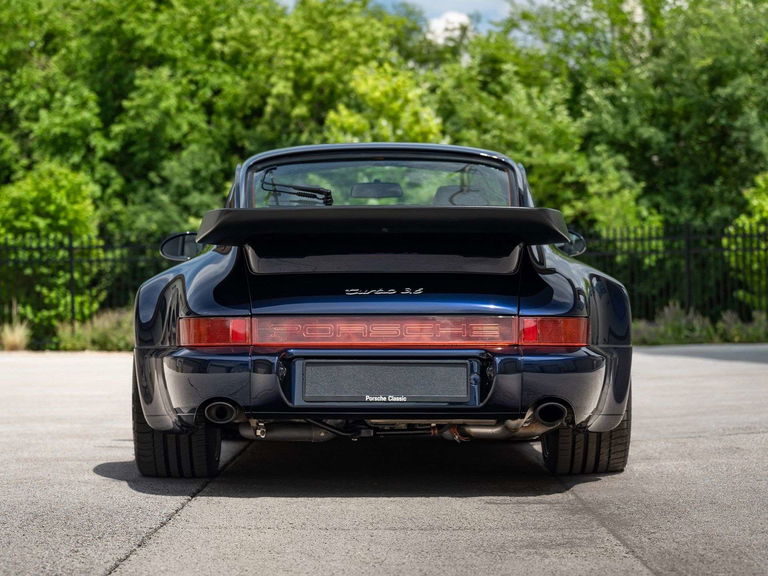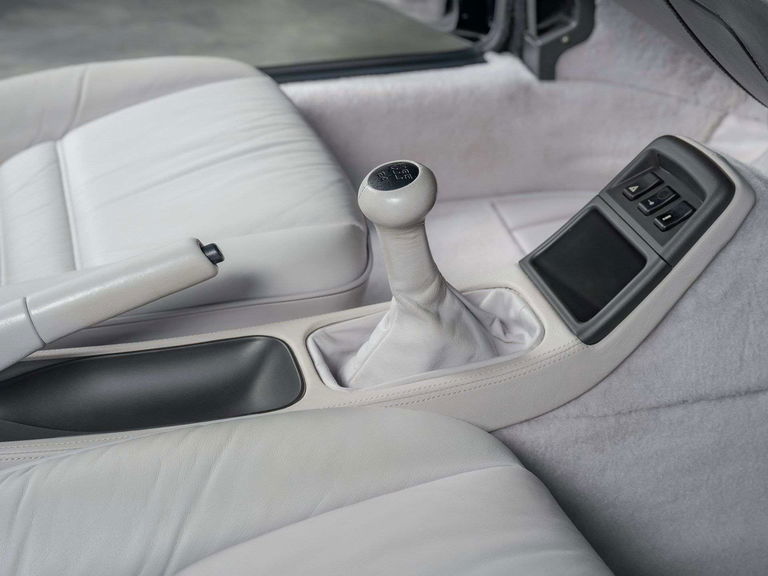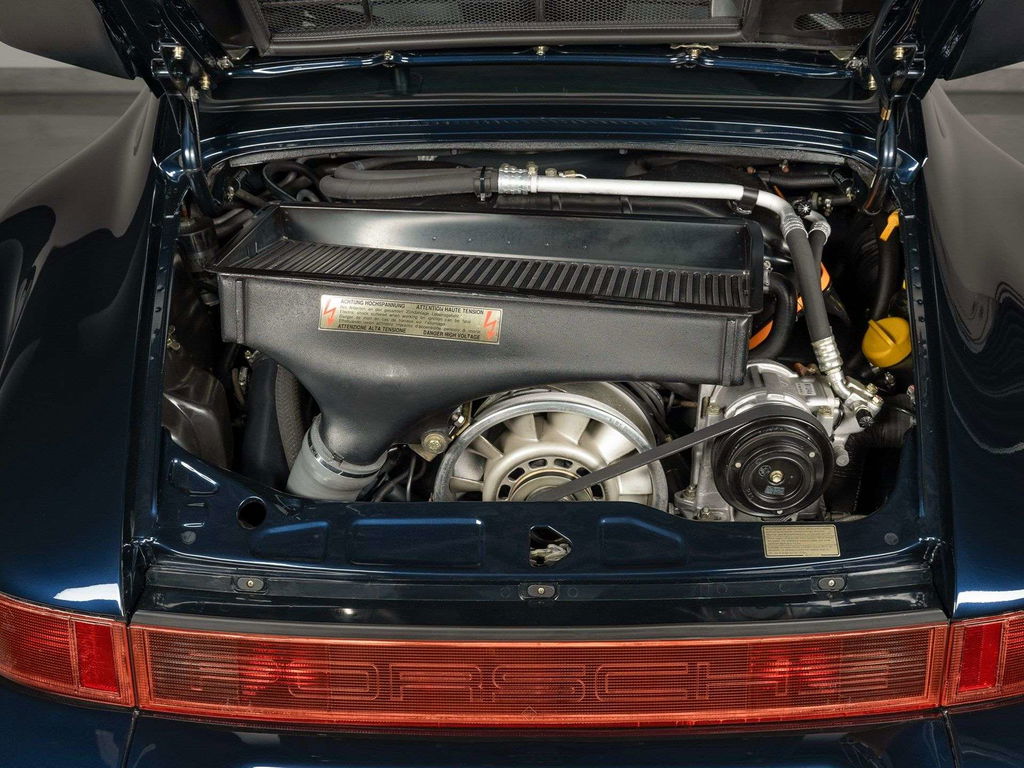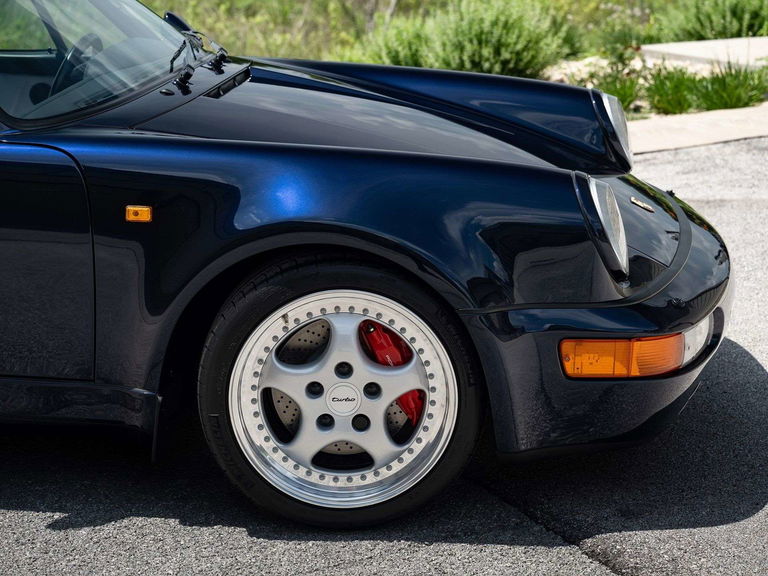The 964 generation of the Porsche 911 is best remembered for being the last iteration cut from the same cloth as the first 911s 30 years prior. Underneath its timeless body, however, the Stuttgart-based automaker’s latest offering was said to be 85 percent new when compared to its Carrera 3.2 predecessor.
Leading the way was an all-new naturally aspirated air-cooled 3.6-liter flat six-cylinder engine known as the M64. This engine was all-aluminum with dry-sump lubrication, twin-spark ignition, and seven main bearings on a forged crankshaft. The chassis saw the first suspension redesign since the 911’s inception, with coil springs and shock absorbers replacing the previous signature torsion bars. Power steering and antilock brakes were also added for the first time, both as standard equipment.
All this updated technology created a new hurdle for Porsche engineers: how to incorporate the Turbo model. While they scrambled to adapt the new M64 engine to turbo configuration, the first 964 Turbos launched with a tweaked 3.3-liter engine from the preceding 930-chassis 911 Turbo. In February 1993, Porsche finally announced the 911 Turbo 3.6, the highest-performance regular production car the firm had ever produced.
Fed by a single KKK K27 turbocharger, power increased to 355 horsepower and 384 pound-feet of torque. The engine shared most internal parts with that of the stock 964, but new pistons and camshafts provided the required 7.5:1 compression ratio. Road tests of the period reported a 0–60 time of just 4 seconds, on par with some Porsches of today. The 964 3.6 Turbo was only sold for the 1993 and 1994 model years with fewer than 1,500 cars produced in total.
Finished in the uncommon exterior color of Midnight Blue Metallic over a Light Grey and Black leather interior, this sleek Turbo 3.6 shows in incredibly well-preserved condition thanks to just 25,600 kilometers (~15,907 miles) showing on the odometer at the time of cataloging. The car was completed 7 September 1993 and delivered new to Germany. Importantly, the Porsche would remain with its original owner into the new millennium and was eventually imported to the United States within the last decade. Build documents show it came equipped with a 92-liter fuel tank, electric sliding sunroof, supple leather seats, and a Blaupunkt stereo. The Porsche will be accompanied by its owner’s books, first aid kid, road triangle, and Fahrzeugbrief.
Lauded by the automotive press when it was announced, Car and Driver magazine commented that the new 3.6-liter 911 Turbo was not only more powerful and easier to drive, but also “more predictable to drive aggressively than any recent 911 Turbo. One no longer needs to have graduated from the Hans Stuck opposite-lock academy to explore the full potential of this car’s awesome power.” Thanks to the long-term ownership of the original buyer, this 911 Turbo 3.6 presents as an incredible opportunity for anyone looking for a well-preserved example, finished in an uncommon exterior color, to experience this for themselves.

























































